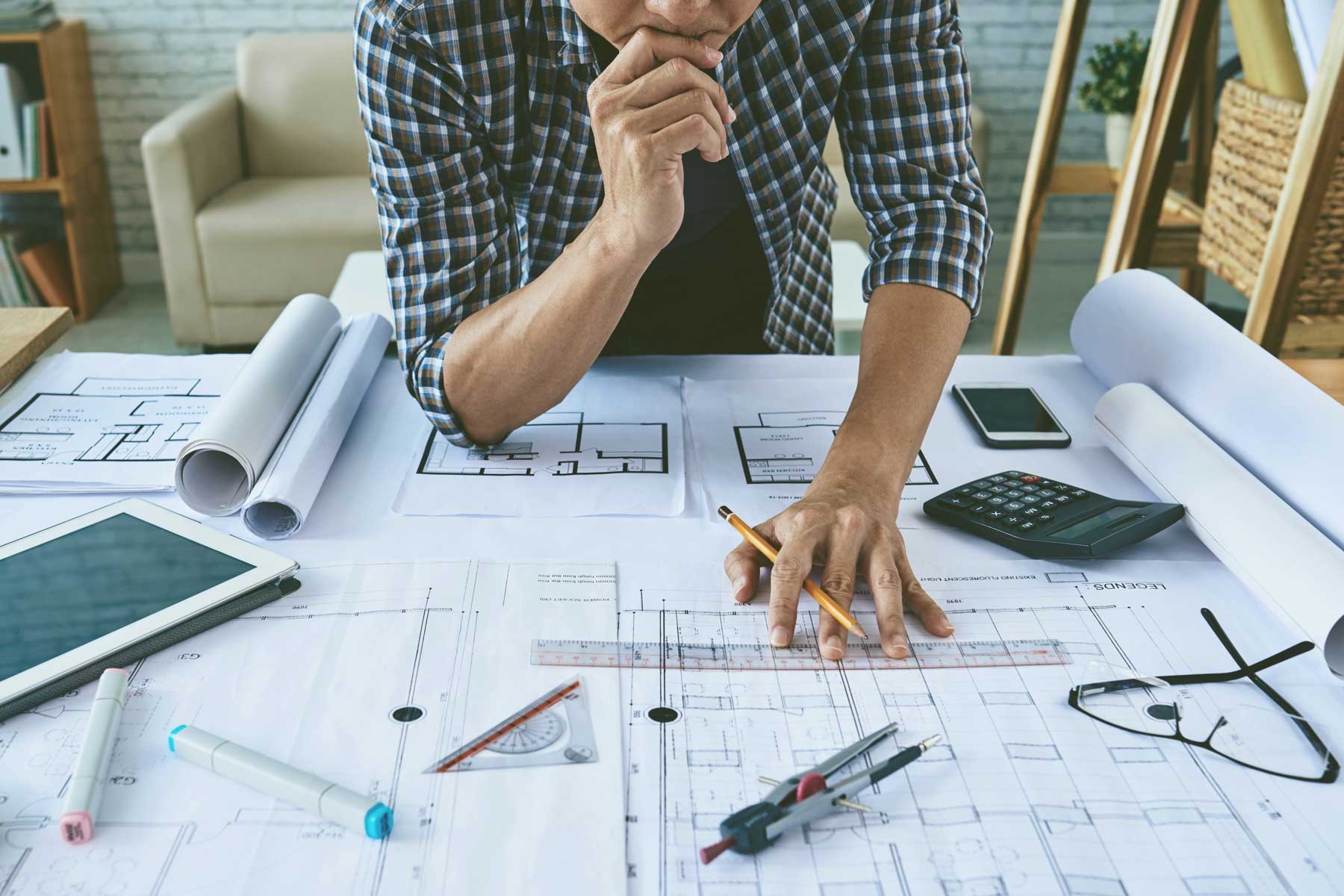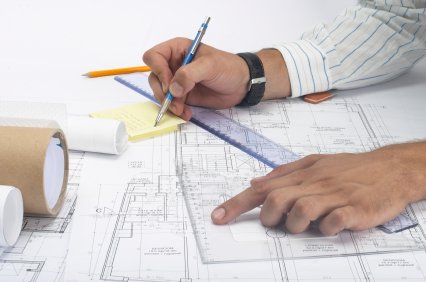The Duty of Sustainability and Innovation in Modern Architect Practices
Sustainability and innovation are reshaping contemporary style in ways you may not anticipate. By accepting smart developments and green materials, engineers are not simply creating buildings; they're crafting atmospheres that improve our quality of life.
The Importance of Sustainable Architecture
Lasting design is essential not just for the setting but additionally for improving our lifestyle. When you accept sustainable layout, you're not just reducing your carbon impact; you're creating areas that promote health and wellness. Think of staying in a home that takes advantage of all-natural light, boosts air top quality, and decreases energy costs. You'll feel much more connected and comfortable to nature.
Moreover, lasting style often causes stronger communities. When buildings are developed with environmentally friendly practices, they can motivate others to do the same, cultivating a culture of sustainability. You'll observe enhanced property values and a better sense of satisfaction in your environments.
Finally, by focusing on sustainability, you're investing in the future. You're making sure that future generations appreciate a healthier earth and vivid communities. So, when you consider your next project, think of just how sustainable architecture can elevate your life and those around you.
Ingenious Materials Changing Building Practices
As you explore cutting-edge materials in architecture, you'll discover that biodegradable building products are reshaping how we think regarding sustainability. Recycled material innovations are giving new life to waste, while wise product innovations boost developing efficiency. These innovations not only promote eco-friendliness however additionally press the boundaries of layout.
Naturally Degradable Construction Products
While standard building and construction products usually contribute to environmental deterioration, biodegradable building products are arising as a practical alternative that transforms structure practices. You can explore options like hempcrete, mycelium, and bamboo, which not just decrease waste however additionally advertise sustainability. These materials break down normally at the end of their lifecycle, minimizing garbage dump contributions. By integrating biodegradable alternatives right into your designs, you're not just improving aesthetic appeal; you're likewise making a favorable effect on the earth. Plus, they frequently call for less energy to generate, even more reducing your project's carbon impact. As you adjust to these innovative materials, you'll discover that they use sturdiness and convenience, enabling you to develop structures that line up with modern-day worths of sustainability and obligation.
Recycled Web Content Advancements
Recently, innovative products with high recycled material have revolutionized structure practices, offering designers interesting brand-new options - Architect. You can currently integrate products like recycled steel, which not just reduces waste yet also flaunts remarkable stamina. Recycled glass is an additional fantastic option, offering visual charm while reducing environmental effect

Smart Product Technologies
Smart material technologies are improving the method you think about constructing practices, supplying vibrant solutions that adjust to changing conditions. These innovative products, such as self-healing concrete and thermochromic glass, improve building efficiency and sustainability. When harmed-- these advancements are no longer simply ideas, visualize structures that can adjust to temperature level modifications or repair themselves. By incorporating clever materials, you can develop energy-efficient designs that react to their atmosphere, reducing general power consumption. The capacity to adjust and keep track of in real-time streamlines upkeep and extends the lifespan of structures. As you accept these technologies, you're not just innovating; you're adding to an extra lasting future in architecture, combining capability with environmental responsibility.
The Integration of Smart Technologies in Style
As technology advances, incorporating clever solutions right into architectural layout becomes important for developing sustainable and effective rooms. You can include smart technologies like building administration systems, which optimize power use and enhance occupant convenience. Sensing units can keep track of ecological conditions, readjusting illumination and temperature instantly based on real-time information. This flexibility not only boosts customer experience but additionally reduces energy consumption.
Integrating Net of Points (IoT) gadgets enables for seamless communication among various structure systems, enabling you to make data-driven choices that enhance functionality. Smart products that reply to environmental adjustments can even more improve your style, providing dynamic options to ever-changing problems.
Power Performance and Renewable Energy Solutions
While lots of engineers concentrate on visual appeals, focusing on energy efficiency her explanation and renewable resource remedies is necessary for sustainable style. You can begin by including passive solar layout, which maximizes natural light and warm, lowering dependence on artificial lighting and furnace. Utilize high-performance insulation and energy-efficient home windows to minimize power loss.
Don't ignore sustainable energy systems-- install photovoltaic panels or wind generators to generate tidy power on-site. You can likewise take into consideration integrating geothermal heating and cooling systems for an extra lasting temperature level policy.
By picking energy-efficient devices and lights, you'll not just reduce energy intake but likewise lower operational expenses for developing occupants.
Integrating these concepts right into your styles not just profits the environment but also improves the building's appeal and value. Eventually, your commitment to power efficiency and renewable resource will certainly set your tasks apart in an open market.
Water Preservation Techniques in Modern Architecture
Incorporating water preservation techniques into modern-day architecture is necessary for creating sustainable buildings that decrease ecological impact. You can attain this by integrating rainwater harvesting systems, which collect and keep rain for a knockout post watering and non-potable uses. Executing low-flow fixtures and wise irrigation systems also decreases water consumption, ensuring reliable usage throughout the building.
Consider making use of drought-resistant landscaping, which needs less water and promotes biodiversity. Integrating absorptive paving products permits rainwater to penetrate the ground, decreasing drainage and recharging groundwater products.
Furthermore, setting up greywater recycling systems can repurpose water from sinks and showers for bathroom flushing or watering, additional preserving resources.
The Influence of Biophilic Design on Health
Biophilic style brings nature inside your home, and you'll see its positive impacts on your wellness and happiness. By boosting indoor air top quality and attaching you with all-natural aspects, these areas can transform your everyday experience. Allow's discover just how incorporating these attributes can boost your overall wellness.
Nature's Influence on Health and wellness
Just how does our setting form our health? It can substantially enhance your physical and psychological health and wellness when you integrate elements of nature into your surroundings. Biophilic design, which emphasizes all-natural light, plants, and natural products, cultivates a sense of connection to the outdoors. This connection can reduce stress and anxiety, boost mood, and enhance cognitive feature. You might find that rooms loaded with plant motivate imagination and productivity, making your daily tasks really feel a lot more satisfying. In addition, natural environments can help you feel extra kicked back and concentrated, promoting total health. By focusing on nature in your setting, you're not just enhancing your area; you're additionally supporting your health and wellness and happiness. Embracing biophilic design is a step towards a much healthier way of life.
Enhancing Indoor Air Quality
While lots of people focus on aesthetic appeals and capability in layout, improving indoor air quality plays an important function in your total wellness. Poor air quality can lead to health and wellness issues like frustrations, tiredness, and breathing issues. By incorporating biophilic layout aspects, you can enhance air quality naturally. Plants, as an example, not only enhance your room but likewise filter contaminants and increase oxygen levels. Utilizing materials with reduced unstable organic substances (VOCs) even more adds to a healthier interior setting. Additionally, taking full advantage of all-natural ventilation helps in reducing indoor toxins. Focusing on these facets in more your style will certainly not just raise your room however also promote a feeling of calmness and health. Ultimately, a concentrate on air quality is crucial for a lasting and healthy living atmosphere.
Connection With All-natural Components
When you attach with all-natural components in your room, you not just enhance its visual allure but likewise significantly enhance your well-being. Biophilic style urges you to incorporate attributes like plants, natural light, and natural products. These aspects develop a calming atmosphere, decreasing anxiety and anxiety.
Future Patterns in Sustainable Building Practices
As the globe faces pressing environmental challenges, engineers are increasingly welcoming innovative methods to sustainability that redefine exactly how we layout and build. You'll see a surge in biophilic design, incorporating nature right into metropolitan rooms to boost health and decrease power consumption. Smart technologies, like AI and IoT, are improving energy monitoring in structures, maximizing source usage, and decreasing waste.
Furthermore, modular building is acquiring grip, enabling for much faster, much more effective structure processes while decreasing environmental impact. Making use of lasting products, such as reclaimed wood and recycled metals, is ending up being typical practice. As you check out these trends, expect a change toward circular style, highlighting the lifecycle of products and promoting reuse and recycling.
These forward-thinking techniques not just address ecological problems however likewise create healthier, extra durable neighborhoods. By staying educated about these trends, you can help form a lasting future in style.
Often Asked Questions
Exactly How Can Sustainability Affect Task Expenses and Budgets?
Sustainability can significantly impact job costs and budget plans. You may find that initial investments in green materials or innovations lead to long-term cost savings with power efficiency, lowered waste, and prospective federal government incentives, eventually stabilizing the general expenditures.
What Certifications Exist for Sustainable Design?
You'll find numerous certifications for sustainable architecture, consisting of LEED, BREEAM, and the Living Building Difficulty. These qualifications aid you show your commitment to sustainability and can boost your project's trustworthiness and interest customers.
Exactly How Does Neighborhood Society Influence Sustainable Layout?
Local society forms lasting layout by showing area traditions, worths, and products. You'll discover that incorporating neighborhood appearances and practices not only values heritage but additionally boosts the functionality and approval of your architectural jobs.
What Duty Does Customer Education Play in Sustainable Practices?
Client education and learning's important for promoting sustainable practices. When you educate clients about advantages, expenses, and ecological influences, you empower them to make informed decisions, promoting a collective technique that improves the task's total sustainability.

How Can Architects Determine the Success of Sustainability Campaigns?
You can determine the success of sustainability initiatives by tracking power consumption, assessing product performance, and gathering comments from customers. Normal audits and contrasts against standards will help you improve your strategies and display renovations efficiently.
By integrating clever materials, you can create energy-efficient designs that react to their setting, decreasing general power usage.While lots of engineers concentrate on visual appeals, focusing on power efficiency and sustainable power services is necessary for sustainable style. Biophilic style, which highlights all-natural light, plants, and natural materials, fosters a feeling of connection to the outdoors. Biophilic style urges you to include attributes like plants, all-natural light, and organic products. As you check out these patterns, expect a shift towards round layout, emphasizing the lifecycle of products and promoting reuse and recycling.